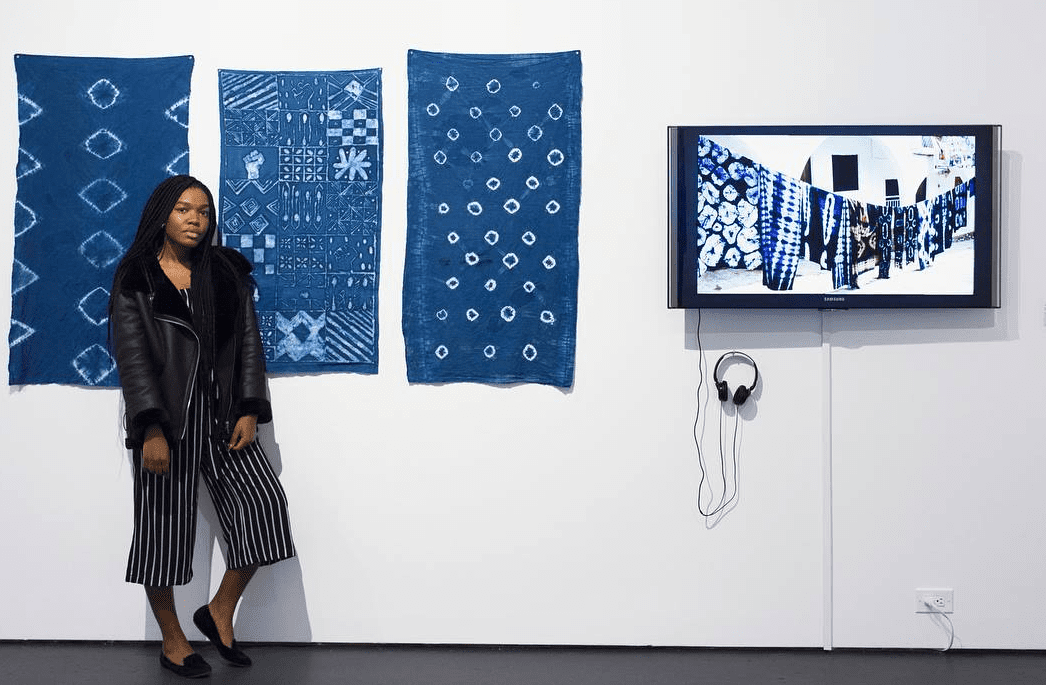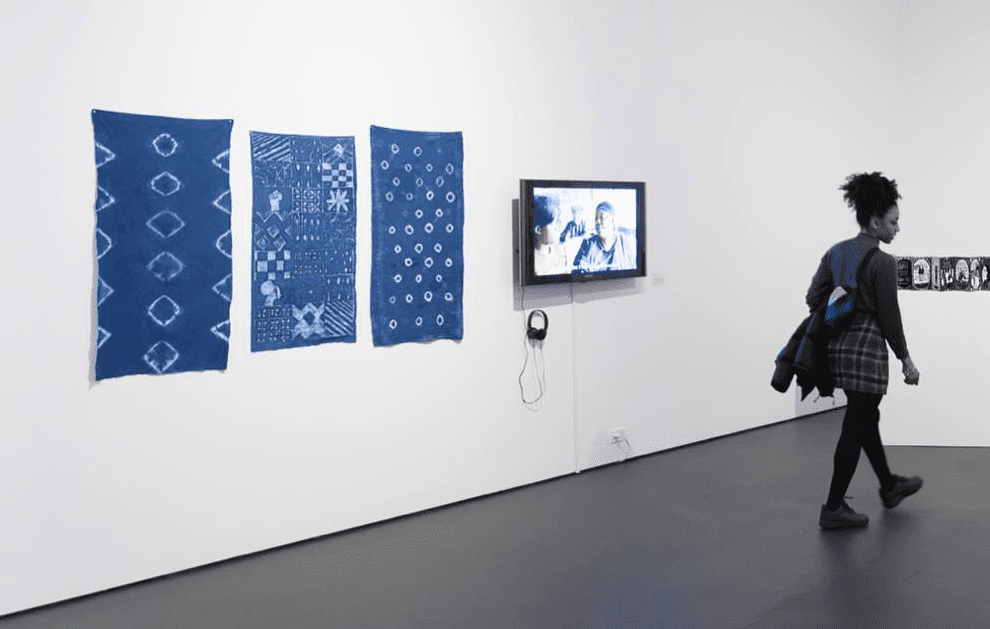Adire: Keeper of Yoruba Culture
Adeiyewunmi Osinubi shares the story of how she's saving this traditional Yoruba art form from extinction
Adeiyewunmi Osinubi shares the story of how she's saving this traditional Yoruba art form from extinction
Written by Adeiyewunmi Osinubi
Ade Osinubi is a Nigerian/American medical student who complements her degree with a budding career in photography, videography and adire textile artistry. Educating others about the Yoruba art form – which she posits is at risk of extinction – Osinubi shares the story of how she became an adire artist in the US, initially for a school project, but now as a craft she will hold on to for life.
When my mother first handed me adire fabric to wear to yet another Nigerian event, I looked at the indigo and white hues with minor disgust. As a first generation American whose parents immigrated from Nigeria in the ’90s, I had barely become comfortable with sporting colourful ankara wax fabrics in public. This new and uncharted fabric had a tie-dye adjacent look – an aesthetic I left behind in Kindergarten. Little did I know that nearly two decades later, I would develop such an appreciation for this peculiar and perplexing fabric.


Ade Osinubi, Self Portraits
Adire translates to “tie and dyed” in my parent’s native tongue of Yoruba. It is fabric designed with resist-dye patterns and primarily indigo dye, though green, brown, and red stains are also used to create varied hues. While adire is mainly used for clothing purposes, it’s not just fabric or a fashion statement – it’s an art form. Within its intricate designs, adire carries the richness of the Yoruba culture.
It’s a story that dates back to the late 20th century, emerging from Abeokuta, a city which inhabits the southwestern region of Nigeria. Through the course of history, Yoruba women artisans have used various methods to achieve the varied designs. To perform the adire Oniko technique, artisans tie the leaves of the native African palm tree, raffia palm around corn kernels and pebbles to create tiny circles on the textiles. Adire Alabere is achieved by intricately stitching raffia to make patterns in the fabric. Once dyed, the stitches are removed, leaving a unique design. For Adire Eleko, artists paint symbols and designs with a paste made out of cassava flour onto the fabric to resist the dye.
As well as being an art form, adire is a storyteller. Like the patchwork quilts of the Underground Railroad, the imagery on adire textiles unearth stories of life and endurance, narrated by the women left out of our history books. As a photographer, videographer, and mixed media artist myself, it is only natural that I would be so drawn to adire – for we both share the same passion for storytelling.


Ade Osinubi, Self Portraits
Like many sacred and cultural art forms, adire is nearing extinction. With Yorubas moving abroad and adire becoming less and less popular to wear, the lineage of those who possess textile making skills shortens. During my senior year of undergrad, I embarked on a project entitled “Adire: Keeper of Yoruba Culture” where I learned how to design the textiles myself. With the help of Youtube, Blick, and a very supportive art professor, I successfully completed three adire textiles. My pieces utilised the Alabere and Eleko techniques – with a few modifications: Raffia palm was replaced with convenience store needle and thread and traditional cassava paste was swapped with liquefied wax. With the wax, for my own expedition into adire storytelling, I painted designs reflecting Nigerian and Black American symbols of quotidian life and resistance. Using needle and thread, I sewed shapes and bound pieces of fabric to create designs.
On the third floor of a concrete art building in Providence, Rhode Island, I was able to bring to life an art form that originated over 5,000 miles away. My finished products did not exactly mirror what the skilled artisans of Abeokuta fashion – the edges of the textiles were not as uniform as they could have been, the indigo dye did not take in some places of the fabric – but perfection, at such an early stage, was never my ambition. The textiles, for me, represent an ongoing process of merging my Nigerian and American identities – imperfect, sometimes messy, but wholly me.


Adire: Keeper of Yoruba Culture Exhibit, David Winton-Bell Gallery
All Image Credits/Adeiyewunmi Osinubi

